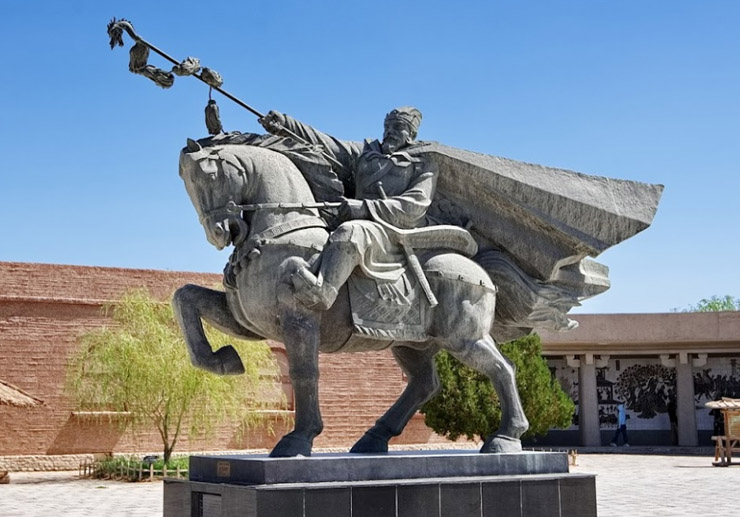HMAP World Story

실크로드
비단길은 주로 중국에서 생산된 수익성이 높은 비단 직물의 무역에서 유래한 이름이다. 이 무역망은 기원전 114년경 중국 한나라(기원전 202~220년)의 사절 장건의 임무와 탐험을 통해 한나라가 중앙아시아로 확장하면서 시작되었다. 중국인들은 무역품의 안전에 큰 관심을 가졌고, 무역로를 보호하기 위해 만리장성을 확장했다. 기원전 1세기까지 중국의 비단은 로마, 이집트, 그리스에서 널리 인기를 끌었다. 동양의 다른 수익성 높은 상품으로는 차, 염료, 향수, 도자기 등이 있었고 서양 수출품으로는 말, 낙타, 꿀, 포도주, 금 등이 있었다. 신흥 상인 계층에게 막대한 부를 창출한 것 외에도 종이와 화약과 같은 상품의 확산은 유라시아를 비롯한 여러 지역의 정치사에도 큰 영향을 미쳤다.
[자세히보기]Source : Wikipedia
Silk Road
The Silk Road derives its name from the highly lucrative trade of silk textiles that were primarily produced in China. The network began with the expansion of the Han dynasty into Central Asia around 114 BCE, through the missions and explorations of the Chinese imperial envoy Zhang Qian, which brought the region under unified control. The Chinese took great interest in the security of their trade products, and extended the Great Wall of China to ensure the protection of the trade route.
[Learn more]Source : Wikipedia
ⓟ Zhang Qian (BC.164-BC.114) / 장건

장건 (张骞, BC.164-BC.114)
중국 전한 시기의 군인이자, 여행가. 한무제의 명령에 따라서 그때까지 알려진 바가 없는 서역으로 떠나, 천신만고의 모험 끝에 수많은 국가를 탐방하고 정보를 가져와, 서역에 대한 중국의 이해를 크게 넓혔고, 최종적으로 서로 다른 문명의 접촉에도 크나큰 영향을 끼친 장본인. 이를 통해 비단길을 개척했다.
[자세히보기]출처 : 나무위키
Zhang Qian (BC.164-BC.114)
Zhang Qian was a Chinese official and diplomat who served as an imperial envoy to the world outside of China in the late 2nd century BC during the Han dynasty. He was one of the first official diplomats to bring back valuable information about Central Asia, including the Greco-Bactrian remains of the Macedonian Empire as well as the Parthian Empire, to the Han dynasty imperial court, then ruled by Emperor Wu of Han.
[Learn more]Source : Wikipedia








 HOME
HOME


 0
0




